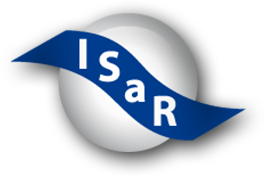Youth with Visual Impairments - Experiences in General Physical Education
empfehlen| Titel: | Youth with Visual Impairments - Experiences in General Physical Education |
|---|---|
| Form: | Aufsatz / Artikel |
| Autor(en): | Lauren J. Lieberman,Barbara Robinson,Heidi Rollheiser |
| Jahr: | 2006 |
| Anzahl Seiten: | 14 |
| Veröffentlicht in: | RE:view: Rehabilitation Education for Blindness and Visual Impairment, Vol. 38, No. 1 |
| Seite (von-bis): | 35-48 |
| Auszug: | The rapid increase in the number of students with visual impairments currently being educated in inclusive general physical education makes it important that physical education instructors know how best to serve them. Assessment of the experiences of students with visual impairments during general physical education classes, knowledge of students Individualized Education Plans (IEPs), and successful modifications of sports and games can provide instructors with a better understanding of how to develop positive levels of participation in physical activity. The involvement of these students in physical education is important because research has found that individuals who have had such involvement are likely to participate in sports after they graduate from school. These authors recommend that the curriculum and programming for students with visual impairments include a mix of open and closed sports and activities. Open sports are those with variables that change often, such as tennis, volleyball, football, soccer, and lacrosse. Closed sports are those that are consistent and predictable, such as archery, bowling, shot put, horseshoes, discus, and bocce. Lifetime activities that are predominantly closed skills, such as tandem biking, running, goal ball, swimming, wrestling, judo, and bowling, should also be included to increase participation in sport and recreational activities. Regardless of the activities offered in the curriculum, the Individuals with Disabilities Education Act of 1997 requires an Individual Education Plan (IEP) that is written specifically for each child with a disability and includes their physical education, present level of performance, short-term objectives (in some instances), and long-term goals. The study reported in this paper was designed to determine the following: (1) which modifications to equipment and rules were successful and unsuccessful; (2) which of the activities offered were the most- and least-liked; and (3) to what extentwere students aware of their IEP goals and objectives. The results of the study indicate that the potential exists for children with visual impairments to have the same level of motor skills and fitness as sighted peers. However, without consistent opportunities and goals for physical education, these children may not attain the appropriate skills to participate in physical activity or sports and games with their peers. Lack of appropriate skills, therefore, may limit opportunities for the positive relationships with peers that could result from the positive involvement in physical activity. Instructors, parents, and therapists should keep in mind that some effort by both the child and the teacher is necessary to ensure appropriate inclusion. Modifications to equipment and rules, as well as involvement in the IEP, take time and energy. The commitment of the IEP team to bring the child to the highest possible educational performance will facilitate success for everyone. |





